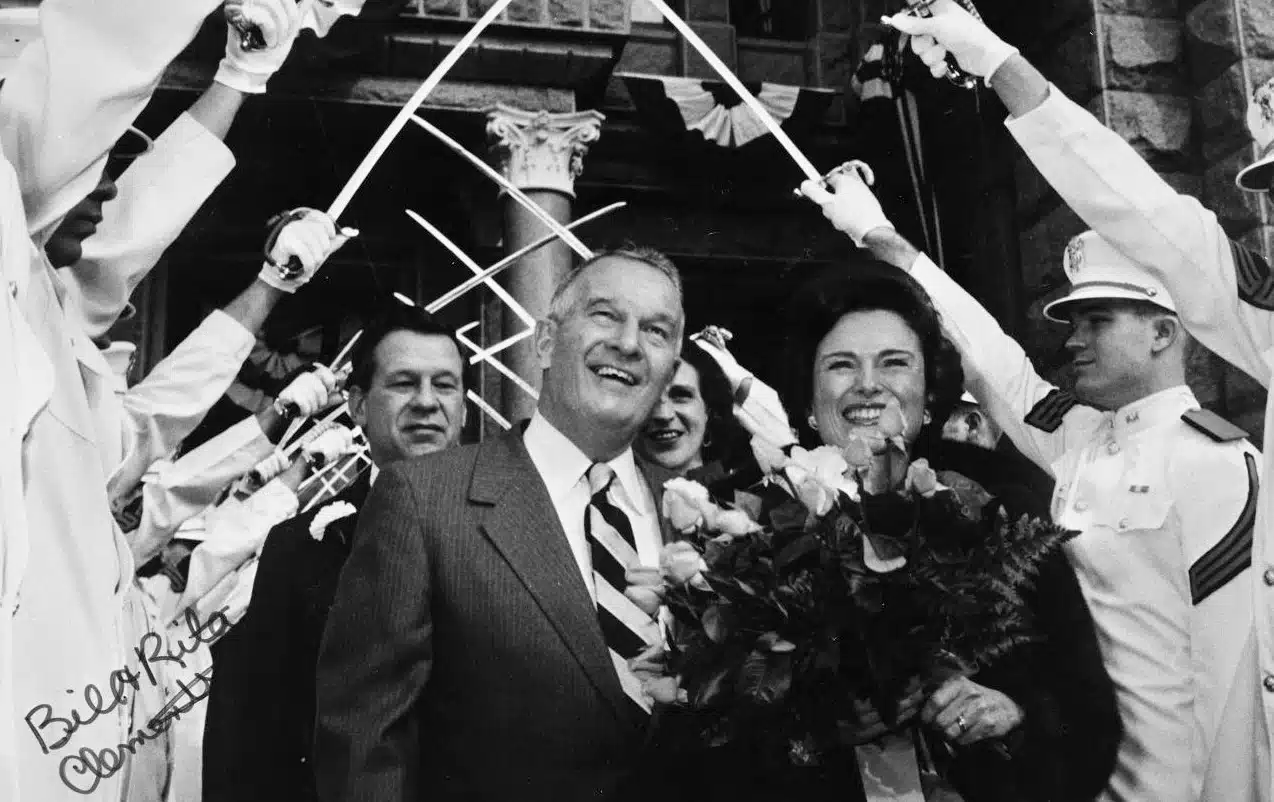William P. Clements Jr., a wealthy oil executive turned political outsider, became the first Republican governor of Texas since Reconstruction, serving two nonconsecutive terms from 1979 to 1983 and again from 1987 to 1991. His election marked a turning point in the state’s political realignment, foreshadowing the Republican dominance that would emerge in the decades to follow.
Clements blended business pragmatism with law-and-order conservatism, helping to redefine the image of a Texas governor and shifting the state’s political center of gravity.
From Oilman to Governor
Born in Dallas in 1917, Clements dropped out of Southern Methodist University and rose through the oilfields to found the offshore drilling giant SEDCO, Inc., which made him a multimillionaire by the early 1970s. He entered public life during the Nixon administration, serving as Deputy Secretary of Defense under Presidents Nixon and Ford. Though never elected to office before, he cultivated a reputation for managerial efficiency and national security hawkishness—credentials that appealed to a growing base of conservative Texans frustrated with Democratic rule.
In 1978, Clements ran a well-financed campaign against Democrat John Hill, the sitting attorney general, and narrowly won the general election. He benefited from divisions within the Democratic Party and growing public unease over crime, school discipline, and liberal social policies. His victory broke a 104-year streak of Democratic governors, sending shockwaves through the state’s political establishment.
A Businessman’s Approach to Government
Clements brought a corporate, hierarchical style to state government. He emphasized budget discipline, accountability, and tough-on-crime policies. During his first term, he pushed for increased prison construction, teacher competency testing, and restrictions on state spending. His administration also streamlined agency operations and sought to limit the power of public-sector unions and state regulatory boards.
Although popular among conservatives, Clements sometimes clashed with the Democrat-controlled legislature, leading to gridlock on certain policy fronts. He also made political appointments that prioritized ideological loyalty, contributing to a perception of partisanship that alienated some moderate voters. In 1982, he lost his bid for reelection to Democrat Mark White, amid dissatisfaction with the economy and growing concern over the state’s education system.
Return to Office and Education Reform
Clements made a political comeback in 1986, defeating Mark White in a rematch. By then, the winds of party realignment were blowing more strongly in his favor. His second term coincided with the early stages of Texas’s shift toward a Republican identity at both the state and national level.
Despite his pro-business instincts, Clements presided over an ambitious education reform package passed during a 1984 special session—known as House Bill 72—which included standardized testing, a controversial “no-pass, no-play” rule for student athletes, and performance-based teacher pay. Though largely initiated under White, Clements continued and defended these reforms, framing them as essential for workforce development and global competitiveness.
His second term was overshadowed by the unfolding SMU football scandal, in which Clements—then a university board member—was implicated in a scheme to continue paying players despite NCAA sanctions. Although the payments predated his second governorship, the revelations damaged his reputation and contributed to a perception of ethical compromise.
Legacy and Political Impact
Clements left office in 1991 and did not seek further political roles, but the imprint of his career was unmistakable. His victories proved that Republicans could win statewide races in Texas, and his style—blunt, corporate, and ideologically consistent—helped shape the archetype of a Texas GOP executive. He opened the door for a generation of Republican leaders, including George W. Bush and Rick Perry, and inspired conservative donors and operatives to build long-term infrastructure for party dominance.
Though not a policy visionary, Clements was a transitional figure. He didn’t create the Republican realignment in Texas, but he embodied it early and gave it gubernatorial legitimacy. His campaigns, appointments, and clashes with Democratic institutions all signaled that Texas was no longer a one-party state.
Personal Life and Later Years
Clements was married to Rita Clements, a political figure in her own right who later served on the University of Texas Board of Regents. The couple remained active in philanthropy and civic affairs after leaving office. Bill Clements died in 2011 at the age of 94.




